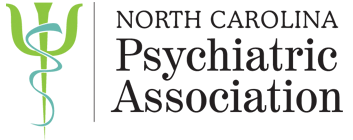CPT Coding, DSM-5, & ICD-10 Information
The last few years have brought major changes to the way psychiatrists diagnose, code and bill for their patients' treatment.
CPT Coding
Recent changes to CPT coding for psychiatrists, particularly concerning Evaluation and Management (E/M) codes, have aimed to simplify and streamline the documentation process while enhancing the accuracy of billing practices. These revisions focus on reducing the administrative burden by allowing psychiatrists to select the appropriate E/M service level based on either medical decision-making or total time spent with the patient on the day of the encounter. This shift emphasizes the complexity and nature of psychiatric care rather than just the quantity of tasks performed. Now, E/M codes are selected based on medical decision making or based on total time spent. 99201 and 99211 were removed.
Selecting E/M Services Based on Medical Decision Making:
2 out of 3 of the following elements must be met or exceeded to qualify: number and complexity of problems addressed, amount and/or complexity of data to be reviewed and analyzed, risk of complications and/or morbidity or mortality of patient management. Then determine the level of complexity: straightforward, low, moderate or high.
| Level of Medical Decision Making |
Number of Diagnoses or Management Options Addressed |
Amount and/or Complexity of Data Reviewed and Analyzed |
Risk of Complications and/or Morbidity or Morality of Patient Management |
| Straightforward (99202 or 99212) |
Minimal
• 1 Self-limited problem or minor |
Minimal or None |
Minimal |
| Low Complexity (99202, 99213) |
Limited
• 2 or more self-limited or minor problems; or
• 1 stable chronic illness,
• 1 acute, uncomplicated illness or injury
|
Limited (Must meet 1 of 2 categories below)
Category 1: Tests and Documents:
• Review of prior external note(s) from each unique source;
• Review of the result(s) of each unique test;
• Ordering of each unique test
Category 2: Assessment requiring an independent
historian(s)
|
Low Risk |
| Moderate Complexity (99204, 99214) |
Moderate
1 or more chronic illnesses with exacerbation, progression or side effects of treatment, or
• 2 or more stable chronic illnesses, or
• 1 undiagnosed new problem with uncertain prognosis, or
• 1 acute illness with systemic symptoms, or
• 1 acute complicated injury |
Moderate (Must meet 1 of 3 categories below)
Category 1: Tests, documents, or independent historian:
• Review of prior external note(s) from each unique source;
• Review of the result(s) of each unique test;
• Ordering of each unique test • Assessment requiring an independent historian(s)
Category 2: Independent interpretation of tests performed by another physician
Category 3: Discussion of management or test interpretation with external physician/other QHP/ appropriate source
|
Moderate
Examples:
• Prescription drug management
• Diagnosis or treatment significantly limited by social determinants of health
|
| High Complexity (99205, 99215) |
High
1 or more chronic illnesses with severe exacerbation, progression, or side effects of
treatment; or
• 1 acute or chronic illness or injury that poses
a threat to life or bodily function
|
High (Must meet 2 of 3 categories below)
Category 1: Tests, documents or independent historians:
• Review of prior external note(s) from each unique source;
• Review of the result(s) of each unique test;
• Ordering of each unique test
• Assessment requiring an independent historian(s)
Category 2: Independent interpretation of tests performed by another physician
Category 3: Discussion of management or test interpretation with external physician/other QHP/ appropriate source
|
High
Examples:
• Drug therapy requiring intensive monitoring for toxicity
• Decision regarding hospitalization
|
Selecting E/M Services Based on Time:
Selecting your code based on time includes both face-to-face and non face-to-face time spent by the clinician (does not include time spent by clinical staff), including the time spent documenting clinical information in the record, taking collateral, reviewing records, etc. Time can be used with or without counseling and/or coordination of care. If selecting codes based on time, the time spent must be documented in the record. This can be done through including start and stop times or indicating total time spent.
New Outpatient E/M Codes
| CODE |
99202 |
99203 |
99204 |
99205 |
| TIME |
15 minutes |
30 minutes |
45 minutes |
60 minutes |
Established Outpatient E/M Codes
| CODE |
99212 |
99213 |
99214 |
99215 |
| TIME |
10 minutes |
20 minutes |
30 minutes |
40 minutes |
Documentation
In 2021, changes to E/M coding went into effect that require only the medically necessary and appropriate portions of history, review of systems, and physical exams are required in an effort to reduce the documentation burden and make it easier to find pertinent information within the record.
DSM-5 Resources
ICD-10 Resources
The 2021 release of ICD-10CM Includes new, updated or deleted codes for medical conditions. A handful of these changes pertain to medical disorders that go into effect October 1, 2021.Download a quick-reference guide to the changes
The CDC has updated the ICD-10-CM with 11 new diagnosis codes describing social determinants of health. These new Z codes were created to provide additional information regarding data such as housing, food insecurity, or transportation.
A: A free webinar with in-depth information about the transition is available at the American Psychiatric Association’s website.. There also are several resources available via the DSM website. You are encouraged to visit this site often as updates in coding and other resources are often added.
|
